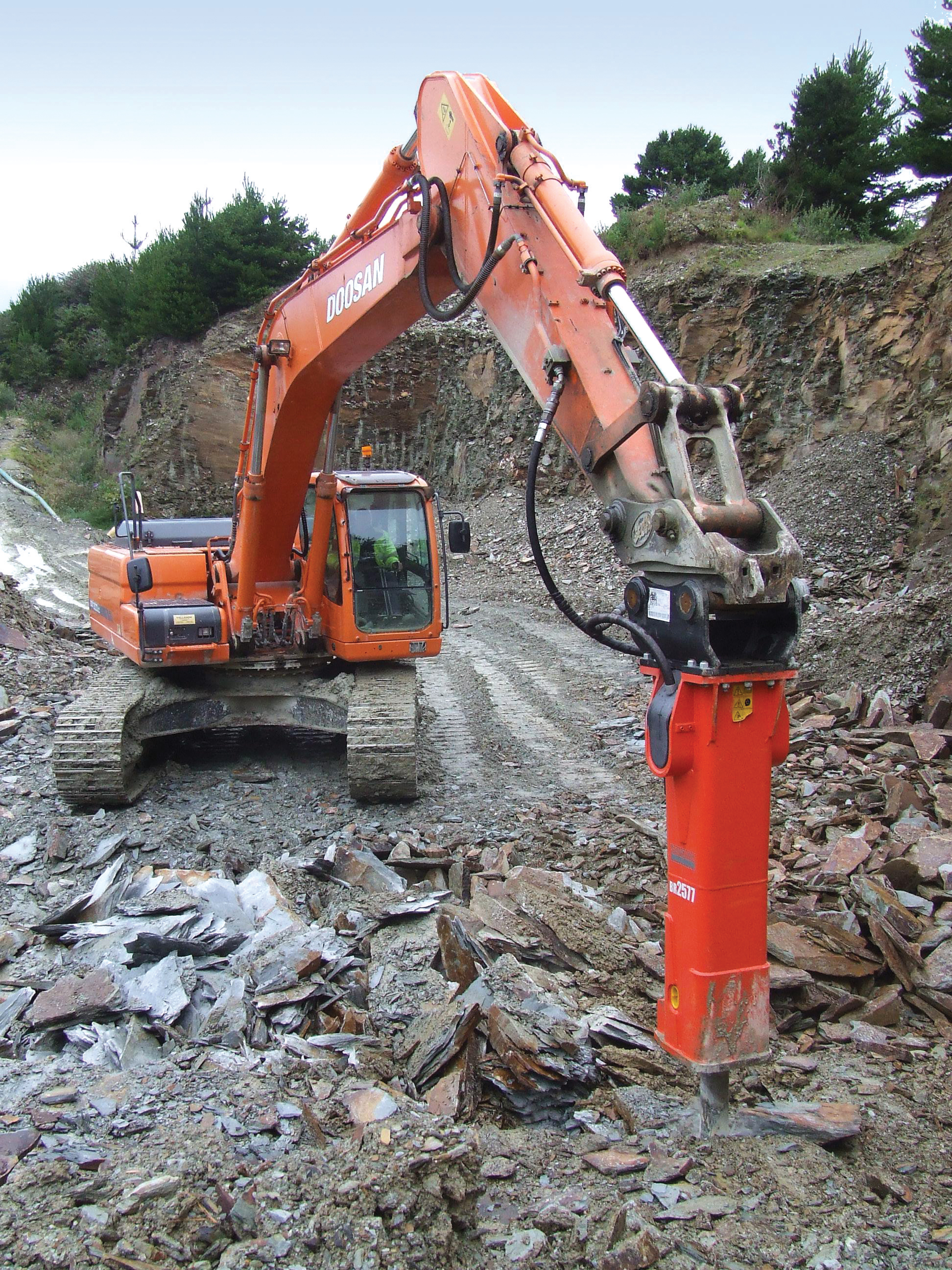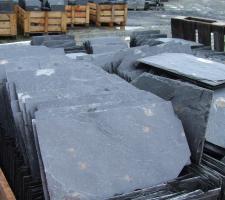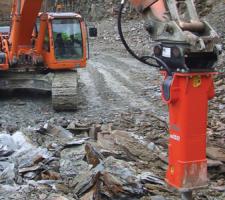
A UK slate and decorative stone producer is using a Sandvik BR2577 hydraulic breaker to put a modern spin on a quarry with long-standing, traditional values
Mill Hill Quarries, established for over 50 years, has three sites in Counties Devon and Cornwall, south-west England.
Its Trevillett Quarry at Tintagel, Cornwall, has a history that stretches back well into the 19th century and was founded by Welsh slate miners and acquired by Mill Hill Quarries in 1990. The company realised that the Trevillett site was particularly favoured with two valuable beds of slate.
The upper Devonian Beds produce a fine red-veined decorative slate used for architectural facing products such as walls and paving slabs, while 20m below these beds are deposits that form part of the Upper Delabole slate beds that provide a fine-grained blue-grey slate, which is perfect for roofing tiles.
The slate is a metamorphic rock derived from fine-grained sediments that have been subjected to heat and pressure during regional metamorphism some 350 million years ago. This caused a reorientation and recrysallisation of the minerals in the rock, making it very dense and strong, but perfect for splitting into thin sheets along a horizontal axis.
The company has employed a series of
The current 1.7tonne BR2577 is mounted on a
With an impact rate of 450-750 blows per minute, the new BR2577 features Sandvik’s Fixed Blow Energy system that ensures optimum impact energy with every blow, regardless of hydraulic flow fluctuations.
Other features include a Soft Blow Sensor which reduces the power and frequency of the breaker for softer rock, and Idle Blow Protection which protects against blank firing.
“On the upper levels the breaker is used for primary breaking. The accuracy of the breaker means that blocks can almost be broken out to size. Although the slate will fracture horizontally with ease, the rock is extremely hard when hammering from the vertical and great care has to be taken not to shatter the slate.
“There are several new features on BR2577 breaker that make extraction more efficient and generate far less waste. The flat base of the casing for instance, makes penetration better, deeper, and more accurate. But there are lots of little improvements that become obvious when you use the breaker,” says quarry manager John Ferrett.
Managing director Mandy Hopkins says: “This is an environmentally sensitive site, with a working chemical plant on the western edge of the quarry and a hamlet to the immediate north of the site. Blasting is now confined to the lower levels, and then only small amounts of pyrotechnic breaker capsules (PBCs) are used once a week to free between 20-30tonnes of slate at any one time.
“The breaker is a lot quieter than the previous model and certainly faster, both of which mean that noise pollution is kept to an absolute minimum.
“Being able to use the breaker to break out the slate block means there is no need for a gang of workers on the ground. The health and safety implications are immediately apparent. There is another advantage in that the breaker can turn the rock on its edge and separate the block by breaking the rock horizontally, greatly reducing pre-production time and minimising waste.”
Once broken out, the coloured slate is diamond cut to size for architectural products, while the roofing slate is cut into various size blocks prior to being hand split by a crew of six workers who produce 2,000 hand-dressed Cornish roofing slates a week.
“With so many cheap slate products flooding the market from India and China, production has to be very efficient to be cost effective. We can’t compete on a mass market but we can on a quality front,” says Hopkins.
The company has bought additional adjoining land and this will give it reserves for many years and secure employment for local craftsmen.















